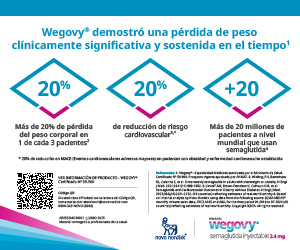¿Cuándo educar? ¿Qué dicen las guías?
Palabras clave:
diabetes, educación, guíasResumen
La educación diabetológica para el automanejo (EDAM) demostró mejorar el control glucémico, reducir las complicaciones y disminuir la mortalidad. El concepto de empowerment en la educación estructurada incluye: identificación de las necesidades, exploración de aspectos psicosociales, definición de objetivos, planificación centrada en el apoyo de toma de decisiones informada, comportamientos de autocuidado con resolución de problemas y evaluación de los resultados. Los programas educativos requieren de un currículum estructurado con objetivos de aprendizaje predefinidos, basados en evidencia científica actualizada y respaldados por una estrategia pedagógica participativa.
Las diferentes guías internacionales (ADA, IDF, ISPAD, SED, Canadiense y Australiana, entre otras) coinciden en que existen cuatro momentos clave en los que la intervención educativa comprobó ser más eficaz acorde al costo-efectividad demostrado por la evidencia según los criterios GRADE sobre el impacto: a) al diagnóstico de la enfermedad; b) en los controles anuales o cuando no se están cumpliendo los objetivos; c) cuando se enfrenta a un nuevo desafío (como la aparición de complicaciones o en embarazo); d) cuando existan cambios en la atención médica o en las diferentes etapas del ciclo vital.
La resolución 2820/2022 de la Ley 23753 basándose en la Guía de práctica clínica del Ministerio de Salud 2019 de nuestro país establece como objetivos de duración, número y periodicidad de la EDAM: inicial: 10 horas, en todas las personas con DM independientemente del tipo, preferentemente dentro del primer año del diagnóstico o en cualquier momento de evolución de la enfermedad en aquellas personas que no la hayan recibido Indica una distribución de 5 a 6 sesiones con una periodicidad semanal o quincenal, con un refuerzo de 2 horas/año a realizarse en las personas con DM que presenten tipo 1 o mal control metabólico o en quienes se realicen cambios en el tratamiento o cuando se producen transiciones en la vida (por ejemplo, de adolescente a adulto), y también ante situaciones especiales donde pueden requerir mayor carga horaria inicial y de refuerzo como inicio de conteo de hidratos de carbono, utilización de infusor subcutáneo continuo de insulina, entre otras tecnologías.
Se recomienda un programa estandarizado, que contenga los siguientes temas en su estructura, basándose en los siete comportamientos del autocuidado de la Asociación Americana de Educadores en Diabetes: 1) alimentación saludable; 2) actividad física; 3) automonitoreo; 4) adherencia terapéutica; 5) resolución de problemas cotidianos; 6) enfrentamiento con actitud positiva; 7) reducción de riesgos para complicaciones.
Se recomienda basar el proceso de apoyo al cambio conductual en el modelo transteórico de cambios conductuales, con un enfoque de equipo interdisciplinario que incluya intervenciones individuales y grupales.
Citas
I. Ministerio de Salud de la Nación. Guía de práctica clínica nacional sobre prevención, diagnóstico y tratamiento de la diabetes mellitus tipo 2, 2019. Buenos Aires, Argentina
II. Guía de práctica clínica de Educación en diabetes. Federación Internacional de Diabetes, región SACA. 5 agosto 2022. Disponible en: https://idf.org/news/guia-de-practica-clinica-de-educacion-en-diabetes/
III. Sherifali D, Berard LD, et al; Diabetes Canada Clinical Practice Guidelines Expert Committee. Self-management education and support. Can J Diabetes 2018;42:S36-S41.
IV. Sociedad Española de Diabetes (SED). Guía de programas estructurados de educación terapéutica 2020. Disponible en: https://www.sediabetes.org/wp-content/uploads/Guia-Programas-Estructurados-Educacion-Terapeutica-2020.pdf.
Descargas
Publicado
Número
Sección
Licencia
Derechos de autor 2024 a nombre de los autores. Derechos de reproducción: Sociedad Argentina de Diabetes

Esta obra está bajo una licencia internacional Creative Commons Atribución-NoComercial-SinDerivadas 4.0.
Dirección Nacional de Derecho de Autor, Exp. N° 5.333.129. Instituto Nacional de la Propiedad Industrial, Marca «Revista de la Sociedad Argentina de Diabetes - Asociación Civil» N° de concesión 2.605.405 y N° de disposición 1.404/13.
La Revista de la SAD está licenciada bajo Licencia Creative Commons Atribución – No Comercial – Sin Obra Derivada 4.0 Internacional.
Por otra parte, la Revista SAD permite que los autores mantengan los derechos de autor sin restricciones.




























